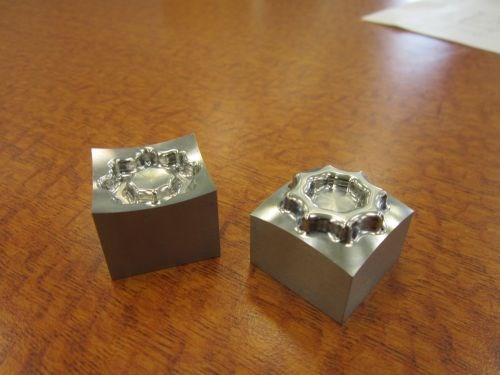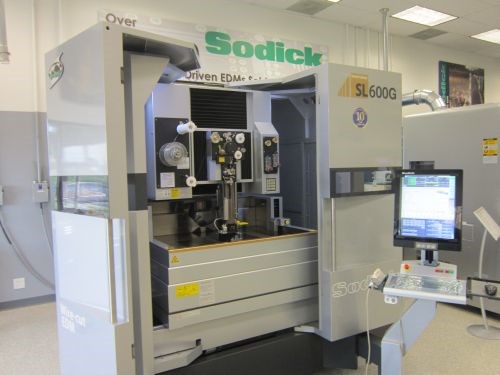New Tech for the Mold Shop
I’m not sure how many moldmakers attended Sodick’s “Smart Technology” open house in Schaumburg, Illinois last month, but the offerings unveiled at the event were particularly relevant to our corner of the industry.

Beyond electrodes, the TT1-400A is quite capable as a general small-parts machine, as it was originally marketed. As an example, Mr. Hipp showed off the part shown here. Machined from 52-Rc 420 stainless, the positive and negative portions of this gear-like geometry fit together well enough that both can be picked up by gripping just one half. Also notable is the fact that not a single surface is completely flat.
After a recent shop visit in Chicagoland, I made a brief foray to Sodick’s tech center to see for myself two new machines unveiled at the company’s open house last month: a wire EDM with a control designed to appeal to both younger and older machinists, and a high-speed machining center designed specifically for electrodes.
Tom Hipp, national high speed mill manager and turn-key projects manager, took me through the nuts and bolts of the new TT1-400A machining center. Originally showcased at IMTS 2012 as a general-purpose, small-part system, the machine has since been modified specifically for machining electrodes, particularly in graphite. Noting that U.S. mold shops machine more graphite relative to those in other countries, Mr. Hipp—whose own background is in moldmaking—says the addition of an integrated Torit graphite-dust collector and positive air-purged dust protection on all three axes and the ATC are particularly important for this market. He adds that whether machined from graphite or copper, electrodes are getting smaller, a trend driven in part by advances in milling machines such as the TT1-400A. In this case, the machine features linear motors on all three axes and a 40,000-rpm spindle with an HSK-E25 interface for smaller work.

A view inside the workzone of the TT1-400A. The dust collection system is visible here, as is the machine’s steel table, which is inlaid into a lighter carbon fiber saddle to provide speed as well as rigidity. Compared to previous models, the centrally located ATC and access points on both the left and right side of the workzone make the machine easier to integrate with automation systems. “There’s plenty of flexibility if you want to, say, put a sinker on one side of the robot and the mill on the other,” Mr. Hipp notes. Also note that the Blum laser tool probe is oriented sideways rather than vertically to avoid getting in the way of a machine-tending robot or other automation.
Mr. Hipp then introduced me to Terry Meyer, applications manager, for a look at the new SL Series wire EDMs. Among the most notable features of these linear-motor-driven machines is the CNC, dubbed the Sodick Control SPW (Smart Pulse Wire). The control uses a Windows 7 operating system and operates just like a smartphone or tablet—that is, if the user wants it to. Machinists who don’t appreciate the touchscreen and new interface icons can switch back to the traditional screen view and the unit’s physical keyboard instead. It also offers the digital Pika-W Plus super finishing circuit, which provides surface finishes better than 6 RMS (0.15µm Ra), as a standard feature rather than an option. Another feature that caught my eye is the completely enclosed machining area, which is said to improve safety and temperature control.

The SL Series EDM is available in two configurations: the SL-G, shown here, and the SL-Q, a high speed version. Each is available in two sizes.
Read Next
Reasons to Use Fiber Lasers for Mold Cleaning
Fiber lasers offer a simplicity, speed, control and portability, minimizing mold cleaning risks.
Read MoreHow to Use Continuing Education to Remain Competitive in Moldmaking
Continued training helps moldmakers make tooling decisions and properly use the latest cutting tool to efficiently machine high-quality molds.
Read MoreHow to Use Strategic Planning Tools, Data to Manage the Human Side of Business
Q&A with Marion Wells, MMT EAB member and founder of Human Asset Management.
Read More












.jpg;maxWidth=300;quality=90)






.jpg;maxWidth=970;quality=90)